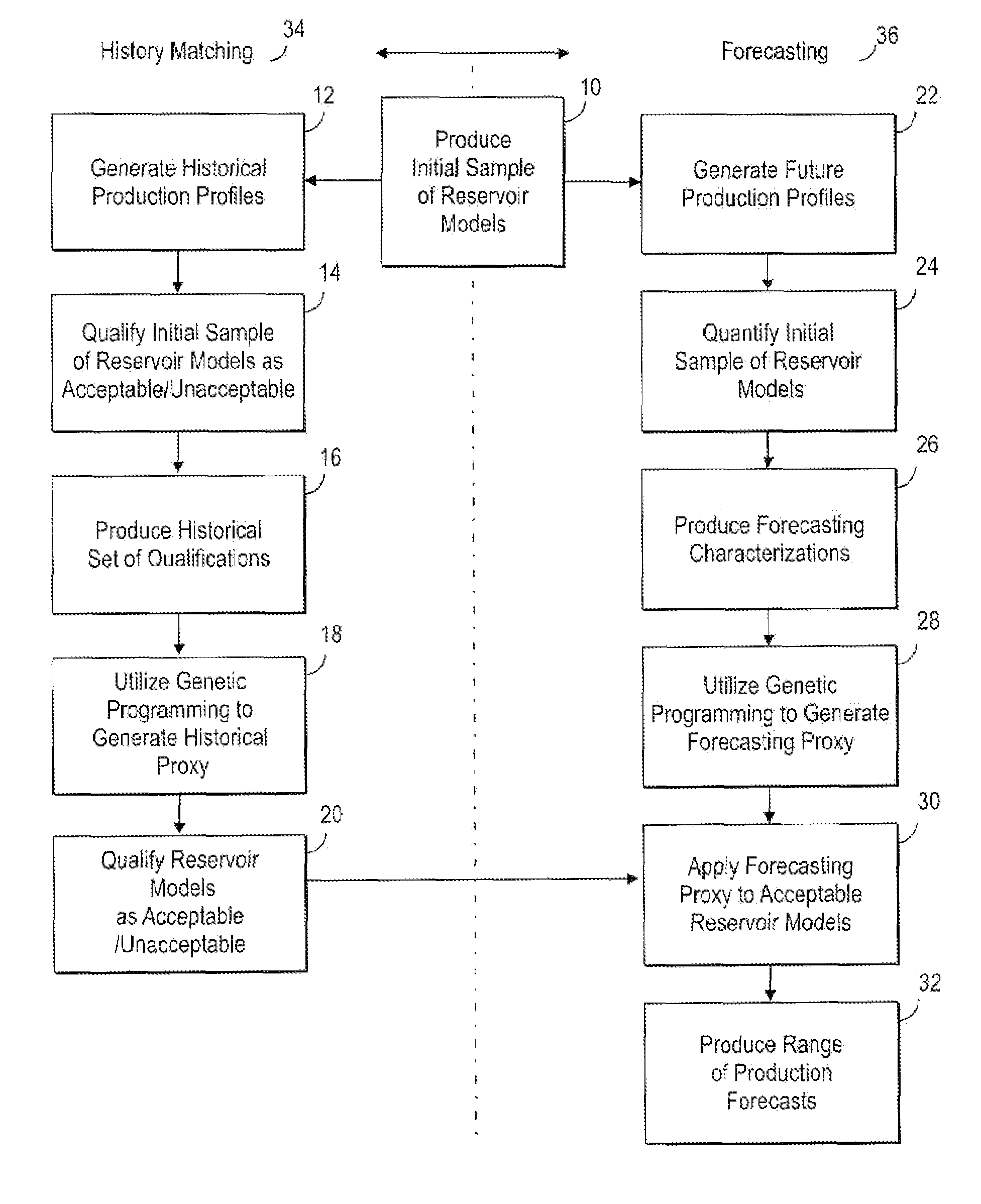Method for forecasting the production of a petroleum reservoir utilizing genetic programming
a technology of genetic programming and petroleum reservoirs, applied in genetic algorithms, instruments, borehole/well accessories, etc., can solve the problems of subjective and labor-intensive prior art manual process of history matching, and it is difficult to simply predict the amount of fluids and gases a reservoir will produce and the amount, so as to improve the accuracy of computer analysis of production.
- Summary
- Abstract
- Description
- Claims
- Application Information
AI Technical Summary
Benefits of technology
Problems solved by technology
Method used
Image
Examples
Embodiment Construction
[0050]While this invention is susceptible of embodiments in many different forms, there are shown in the drawings, and will herein be described in detail, preferred embodiments of the invention with the understanding that the present disclosure is to be considered as an exemplification of the principles of the invention and is not intended to limit the broad aspect of the invention to the embodiments illustrated.
[0051]The present invention allows one to analyze an oil or gas reservoir and provide more reliable future production forecasts than existing prior art methods. The future production forecasts can then be used to determine how to further develop the reservoir.
[0052]To improve the confidence in the production forecasts of reservoir models, a dense distribution of reservoir models needs to be sampled. Additionally, there needs to be a method for identifying which of those models provide a good match to the production data history of the reservoir. With that information, only g...
PUM
 Login to View More
Login to View More Abstract
Description
Claims
Application Information
 Login to View More
Login to View More - R&D
- Intellectual Property
- Life Sciences
- Materials
- Tech Scout
- Unparalleled Data Quality
- Higher Quality Content
- 60% Fewer Hallucinations
Browse by: Latest US Patents, China's latest patents, Technical Efficacy Thesaurus, Application Domain, Technology Topic, Popular Technical Reports.
© 2025 PatSnap. All rights reserved.Legal|Privacy policy|Modern Slavery Act Transparency Statement|Sitemap|About US| Contact US: help@patsnap.com



